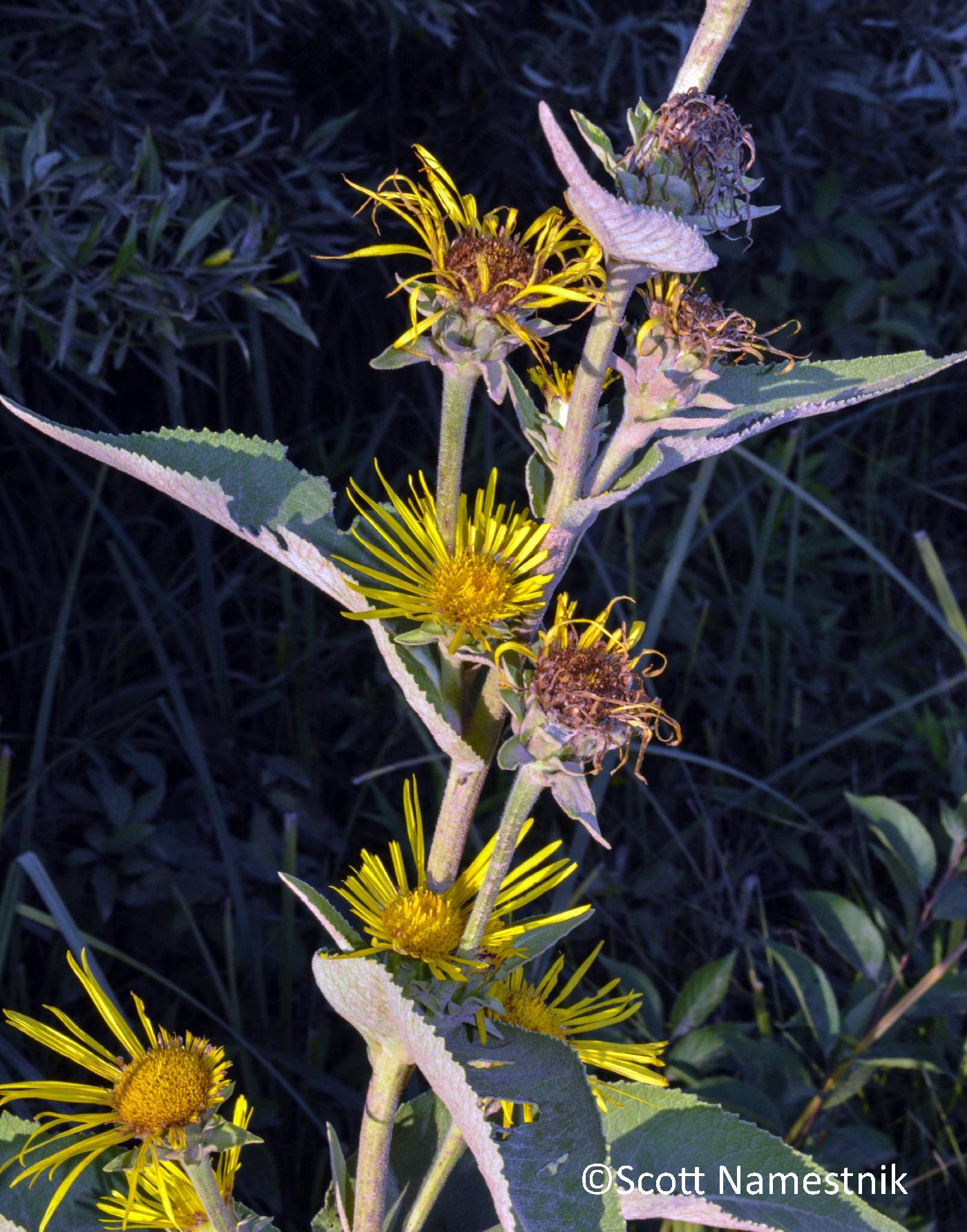Inula
|
Family: Asteraceae |
Perennials [annuals], 20-200 cm. Leaves basal (usually withering before flowering) and cauline; petiolate (proximal) or sessile (distal); blade margins usually serrate to dentate, sometimes entire. Heads radiate [disciform, discoid], borne singly or in open, corymbiform arrays. Involucres hemispheric or campanulate, [5-]10-40 mm diam. Phyllaries persistent, in 4-7+ series. Receptacles flat or convex, smooth or alveolate, epaleate. Ray florets (15-)50-150+, pistillate, fertile; corollas yellow [orange], laminae 10-30+ mm. Disc florets mostly (50-)100-250+; corollas yellow, lobes 5. Cypselae ± columnar (subterete) or prismatic (± 4-5-ribbed or -angled); pappi persistent, of basally connate, barbellate bristles or setiform scales in 1 series. x = 8, 9, 10. The three species in the flora are probably escapes from cultivation. Formerly, Inula was circumscribed more broadly.
Heads radiate, yellow, the rays pistillate; invol hemispheric or campanulate, its bracts imbricate in several series, the inner commonly narrow and scarious, the outer more herbaceous and often broader; receptacle flat or convex, naked; disk-fls tubular and perfect; anthers sagittate-tailed; style-branches flattened, externally slightly papillate distally, with well developed ventromarginal stigmatic lines extending all the way around the rounded tip; achenes subterete or ±prominently 4-5 ribbed or angled; pappus a single series of few to numerous capillary bristles, sometimes connate at base; ±hairy or glandular herbs with alternate or basal, simple lvs. 200, Old World. Gleason, Henry A. & Cronquist, Arthur J. 1991. Manual of vascular plants of northeastern United States and adjacent Canada. lxxv + 910 pp. ©The New York Botanical Garden. All rights reserved. Used by permission. |

